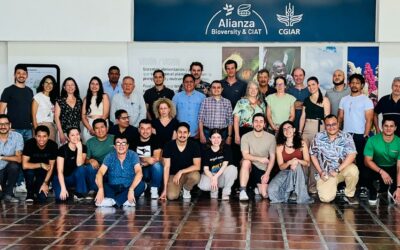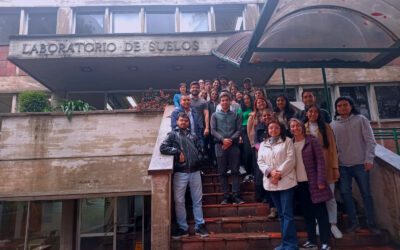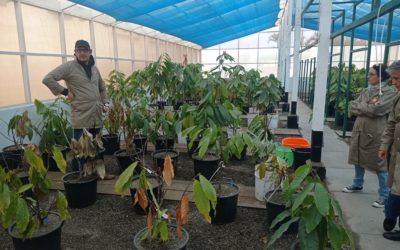Cocoa Genetics
There is an urgent demand for robust and cost-effective solutions to reduce bean cadmium content via changes in production systems, such as the use of low cadmium accumulating cultivars or rootstock.
Clima-LoCa evaluates in the field, commercial clones for their ability to accumulate cadmium in the beans. These commercial clones, as well as promising clones, are under validation for future release to farmers.
Also, Heavy metals influence water delivery to the shoot of plants, which can lead to decrease cocoa production and this effect may become more prominent under climate change. Therefore, it’s necessary to obtain scientist information to analyze the vulnerability of the cacao plant to cadmium with respect to water deficit.
Is important to determine the viability of the propagation of promising genotypes under the conditions of the farmer fields, involving the participation of the farmer associations of each country.
For this reason, the genetic component focuses on:
Act 1.2
Survey and assessment of commercial clones for level of cadmium in cocoa beans
Act 2.2
Identify and test promising cocoa genotypes for low cadmium accumulation and drought tolerance and study underlying interactions, mechanisms
Act 3.2
Pilot budding techniques to reduce cadmium accumulation in cocoa beans on smallholder farms
News
No Results Found
The page you requested could not be found. Try refining your search, or use the navigation above to locate the post.
This is how we lived the annual workshop of The Clima-LoCa project
From the 19th to the 23rd of February was the Annual Workshop of The Clima-LoCa project (2024), an event that has taking place for four years and has been crucial to the planification and development of the project in recent years. The first workshop took place in...
Workshop: Good Laboratory Practices and Quality Control
Within the framework of the STDF and Clima-LoCa projects, the theoretical-practical workshop of Good Laboratory Practices and Quality Control was held. The workshop had several sessions distributed between Bogotá in Colombia, Guayaquil and Quito in Ecuador, during the...
Knowing some of the implementation activities of the genetics component
The use of cultivars or grafts that can provide a solution to the cadmium problem is one of the alternatives being evaluated in one of the components of the Clima-LoCa project. Thus, the genetics component is being implemented by regional and international...



